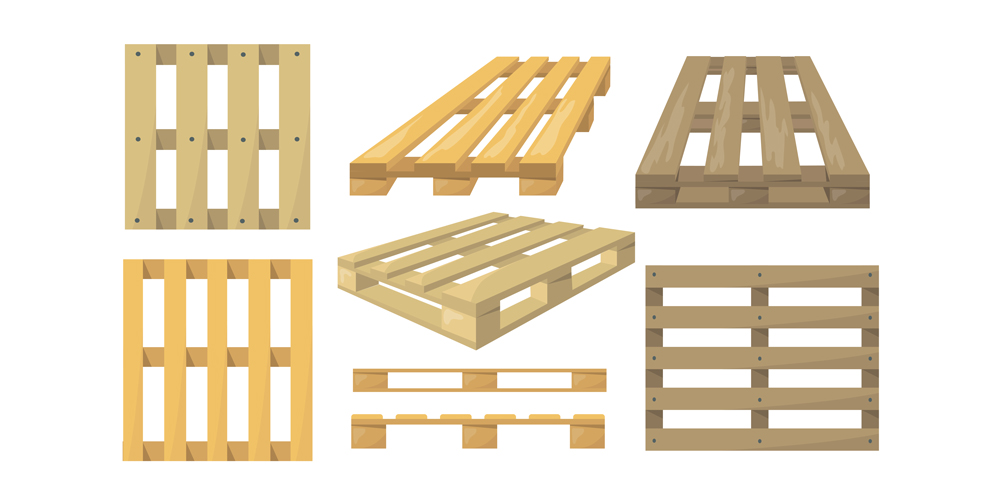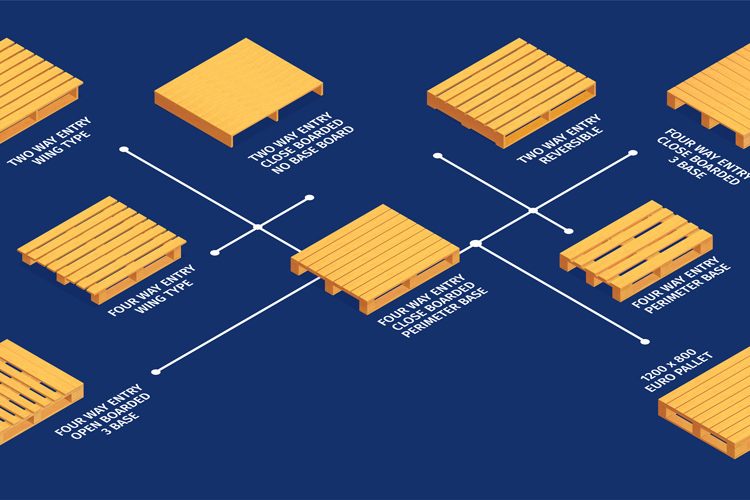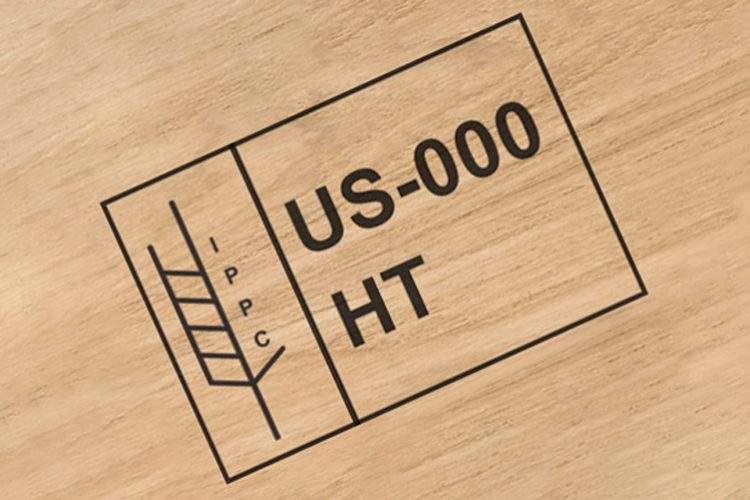The standard dimensions of a pallet, also known as pallet dimensions, are very important based on the packaging dimensions of products like boxes, cartons, or bags. Because the best way to place a load on a pallet is to utilize the maximum surface of the pallet, while ensuring the load does not protrude from the pallet's surface. But do pallets have standard dimensions, or can each industry define its own required standard dimensions for pallets?

Pallet dimensions can vary based on your needs. However, generally, regardless of the industry, several international standard sizes for pallets have been defined. It may not be common for all pallets with different standard dimensions to be used in one industry, and each industry may use pallets with specific dimensions. Typically, organizations use pallets with common dimensions that are portable with a pallet jack and forklift.
Standard pallet dimensions are very suitable for loading into trucks and containers, eliminating the need to examine and review how pallets are stacked.
History of Standard Pallet Dimension Establishment
World War II aided many industries, including the grocery industry, to package goods on pallets. However, at that time, standard pallet dimensions were not yet defined, and the pallet size was determined based on the product. Pallets were manufactured in various shapes and sizes at that time. Before the widespread use of wooden pallets, metal pallets were also produced. However, due to their weight, they gradually gave way to wooden pallets.
From a few years after World War II to the present day, when discussing standard dimensions of wooden pallets, typically, a pallet of 100 by 120 centimeters is referred to. The use of this pallet has been commonplace for over 110 years. However, back then, the aim of creating pallets in this size was to establish standards for grocery stores.
At a time when almost all food items were loaded individually by hand into trucks, it was decided to design a standard pallet size of 120 by 100 centimeters to expedite the distribution of food items and simplify the transportation process. However, the most common standard pallet size in the world is still 100 by 120 centimeters. If you want more information on pallet design, reading an article on pallet design principles will be very helpful.
Today, in the grocery industry and food industries, more than any other industry, pallets with these dimensions are primarily used. Many retail industries and other consumer goods also use pallets of this standard size. A standard pallet has wooden boards with a length of 120 centimeters, and the platform's width is 100 centimeters.
Establishing Standard Pallet Sizes for International Trade
In the early 20th century, several countries began to establish organizations to facilitate trade in many industries, including construction-related and machinery industries. These organizations aimed to address challenges of international trade, such as standardizing pallet dimensions. Because the need for standard pallet dimensions was not a challenge specific to only one country or a few countries. After World War II, these organizations came together to facilitate trade, and the International Organization for Standardization (ISO) was established. ISO is an international body that creates global standards for dimensions and measurements. These dimensions are then applied in production, transportation, storage, and other relevant bodies.
The standard pallet size of 100 by 120 centimeters is one of the six standard sizes for pallets approved by the ISO. In the rest of this article, we will introduce all six standard pallet sizes to you. You can also read a related article to learn more about the features of export pallets and to familiarize yourself with all the ins and outs of export pallets.
Why is adhering to standard pallet dimensions important?
Adhering to standard pallet sizes in countries and internationally is crucial for enhancing supply chain efficiency. For example, adhering to these standard sizes optimizes the storage of materials and products in warehouses. By standardizing pallet sizes, the maximum number of pallets can be accommodated in a truck or container during transportation, ultimately reducing transportation costs.
Why is considering the dimensions of pallets not suitable for all industries?
Not all products or shipments can use pallets of standard sizes. Some products are shaped in a way that requires custom-sized pallets for their movement. Attempting to use standard-sized pallets for such goods exposes your product to damage.
The preparation of pallets with standard dimensions largely depends on the size and weight of your product. However, to determine the correct dimensions of pallets for specific products, other factors must also be considered such as the dimensions of the product, how it is transported, where the load is stored, and whether the pallets are reusable or not. To do this, a packaging specialist can help you carefully evaluate all aspects and determine what size and dimensions of pallet are suitable for your products.
Euro pallets are also one of the types of standard pallets, which we have provided necessary explanations about in the related article.
Standard dimensions of wooden pallets
In the table below, you will see the standard dimensions of pallets. However, as mentioned, these standard dimensions may not be usable for all goods.
Standard pallet size table in different countries and continents
Name | Age |
North America | 122 * 101 |
North America, Europe, Asia | 107 * 107 |
Europe, Asia | 120 * 100 |
Asia | 100 * 110 |
Europe | 80 * 120 |
Australia | 114 * 114 |
In addition, pallets with the following dimensions (standard and non-standard) are common in various industries:
Standard size table in different industries
Name | Size |
Food and consumables | 120 * 100 |
Dairy | 100 * 100 |
Beverage products | 91 * 91 |
Retail | 50 * 120 |
Beverage products, paper packed | 90 * 120 |
Beverage products, chemicals | 107 * 120 |
Atomotive industries | 120 * 114 |
Military industries, cement making | 120 * 100 |
Military industries | 98 * 116 |
Chemicals, carrying barrels | 112 * 112 |
Barrels | 120 * 120 |
Paint industries, telecommunication products | 107 * 107 |
In Iran, the most common standard size of a wooden pallet is one meter by one meter. But pallets with dimensions of 105 x 105, 110 x 110, 115 x 115, 100 x 120, 80 x 120 and 110 x 130 cm are part of the standard dimensions produced in Iran.
Size table of pallets used in Iranian industries
Size |
105 * 105 |
110 * 110 |
115 * 115 |
120 * 100 |
120 * 80 |
130 * 110 |
Standard dimensions of pressed wood pallets
Given the current popularity of pressed wood pallets and the fact that most organizations are planning to replace their wooden or plastic pallets with this type of pallet, it is necessary to discuss the standard dimensions of pressed wood pallets in this article.
Generally, the most common standard dimensions of pressed wood pallets, like wooden pallets, are 100 by 120 centimeters. A pressed wood pallet with dimensions of 110 by 130 centimeters is also considered standard. Both sizes mentioned are very suitable for handling and moving with pallet jacks and forklifts.

Buying or renting pallets? Which work is better?
When it comes to the logistics and storage industry, the decision between buying and renting pallets is crucial and can...

Familiarity With Different Types Of Pallet Designs
In addition to the diversity in the material and dimensions of pallets, there are other differences between different types of...

High Strength Against Heavy Weights
The importance of high-strength pallets against heavy weights cannot be overstated, as they form the backbone of efficient transportation and...

Environmental Impacts Of Pressed Pallets
Pressed pallets are recognized as one of the newest inventions in the transportation industry that pay special attention to environmental...

Equipment For Pallet Handling
Easy Homemade Remedies with Rosewater for Luscious Hair and Glowing Skin Today, with the growth of industry, many organizations are...

Enhancing Product Transport and Storage
In today's globalized economy, the efficient transportation, handling, and storage of products are essential for businesses to remain competitive. However,...

Signs Of Pallets And Their Meanings?
There are around 100 standard sizes of pallets in the world. Therefore, the diversity of available pallets from a technical...
